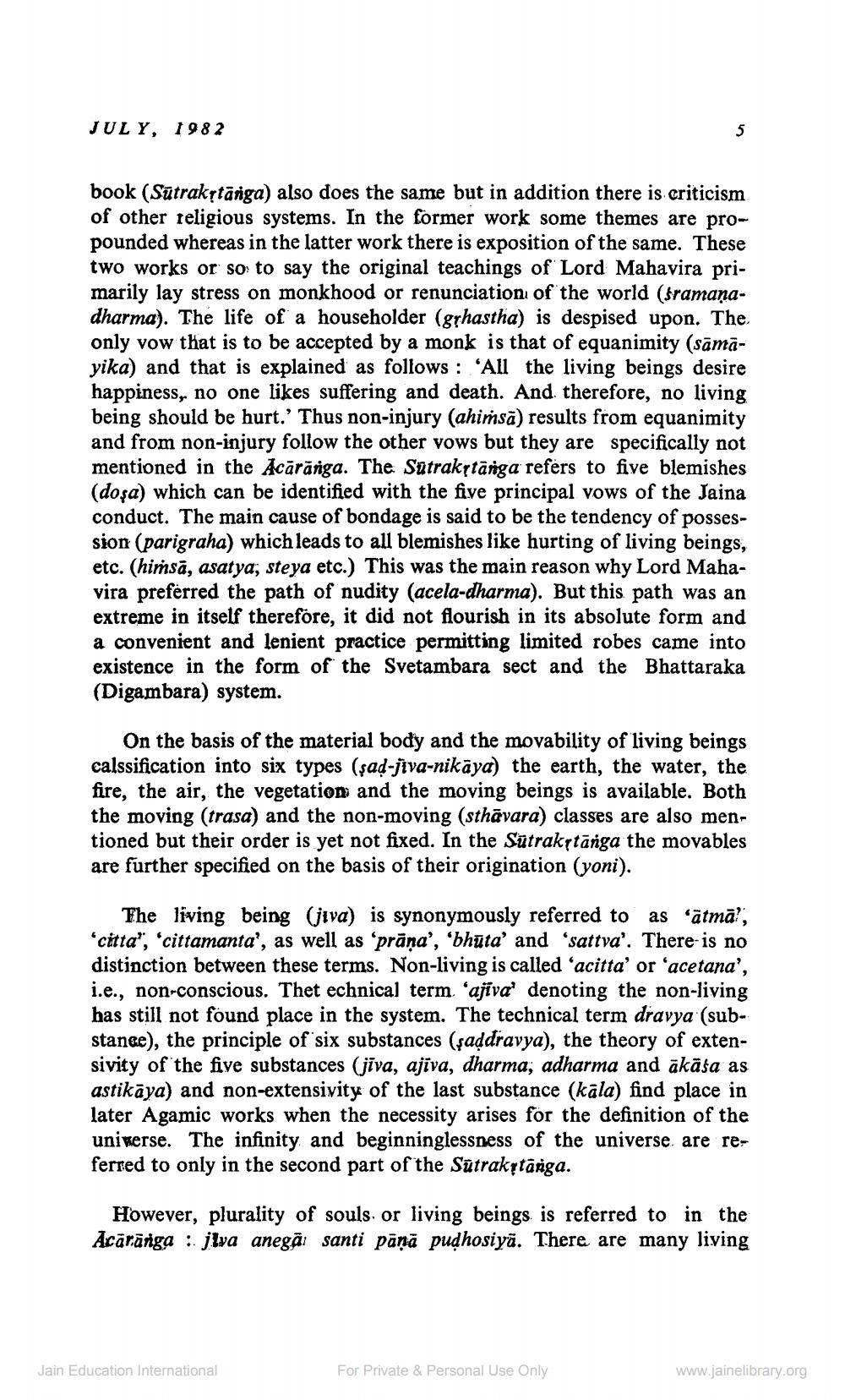________________
JULY, 1982
book (Sutrakstānga) also does the same but in addition there is criticism of other religious systems. In the former work some themes are propounded whereas in the latter work there is exposition of the same. These two works or so to say the original teachings of Lord Mahavira primarily lay stress on monkhood or renunciation of the world (framanadharma). The life of a householder (grhastha) is despised upon. The only vow that is to be accepted by a monk is that of equanimity (sāmāyika) and that is explained as follows: 'All the living beings desire happiness, no one likes suffering and death. And therefore, no living being should be hurt.' Thus non-injury (ahiṁsā) results from equanimity and from non-injury follow the other vows but they are specifically not mentioned in the Acārārga. The Sutrakytānga refers to five blemishes (doşa) which can be identified with the five principal vows of the Jaina conduct. The main cause of bondage is said to be the tendency of possession (parigraha) which leads to all blemishes like hurting of living beings, etc. (hiṁsā, asatya, steya etc.) This was the main reason why Lord Mahavira preferred the path of nudity (acela-dharma). But this path was an extreme in itself therefore, it did not flourish in its absolute form and a convenient and lenient practice permitting limited robes came into existence in the form of the Svetambara sect and the Bhattaraka (Digambara) system.
On the basis of the material body and the movability of living beings calssification into six types (şad-jiva-nikāya) the earth, the water, the fire, the air, the vegetation and the moving beings is available. Both the moving (trasa) and the non-moving (sthāvara) classes are also mentioned but their order is yet not fixed. In the Sūtrakstānga the movables are further specified on the basis of their origination (yoni).
The living being (jiva) is synonymously referred to as 'ātmā?, 'citta", 'cittamanta', as well as ‘prāņa', 'bhūta' and 'sattva'. There is no distinction between these terms. Non-living is called 'acitta' or 'acetana', i.e., non-conscious. Thet echnical term 'ajiva' denoting the non-living has still not found place in the system. The technical term dravya (substance), the principle of six substances (şaddravya), the theory of extensivity of the five substances (jiva, ajīva, dharma, adharma and ākāśa as astikāya) and non-extensivity of the last substance (kala) find place in later Agamic works when the necessity arises for the definition of the universe. The infinity and beginninglessness of the universe are referred to only in the second part of the Sutrakrtānga.
However, plurality of souls, or living beings is referred to in the Acārārga : jlya anegai santi pānā pudhosiya. There are many living
Jain Education International
For Private & Personal Use Only
www.jainelibrary.org




